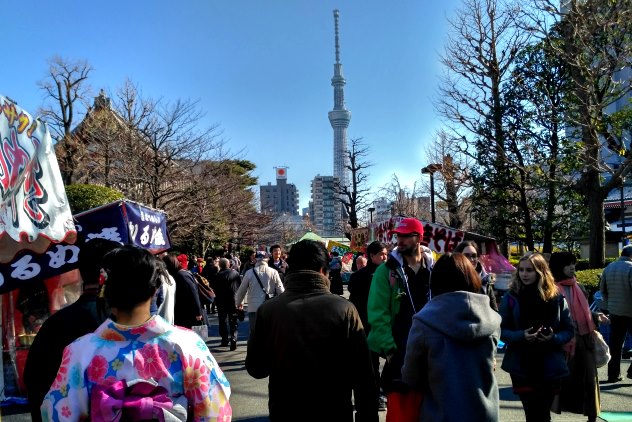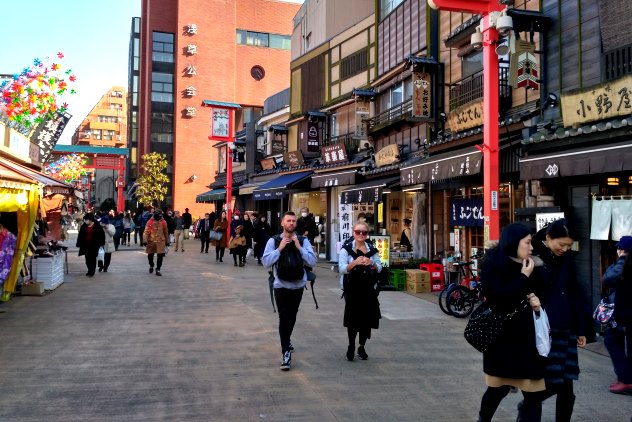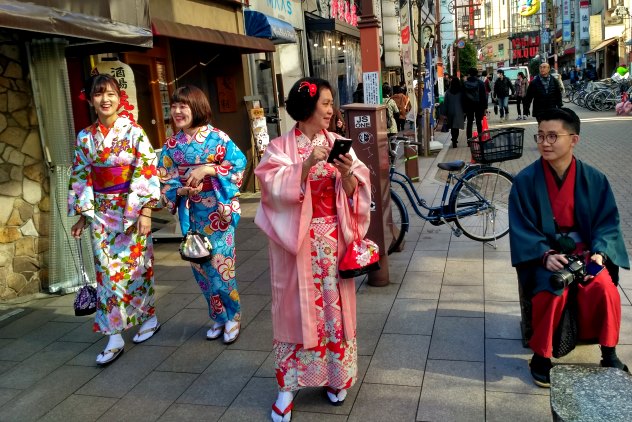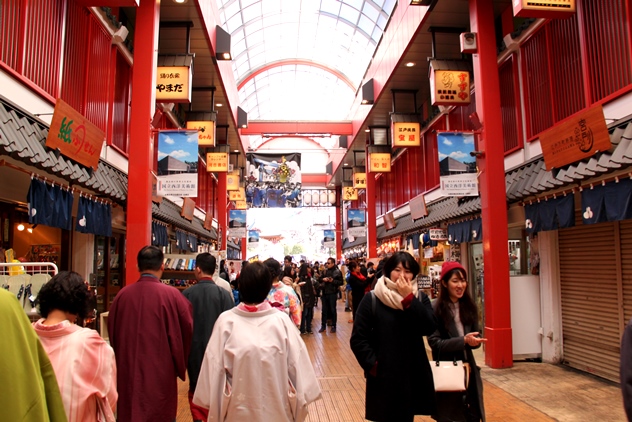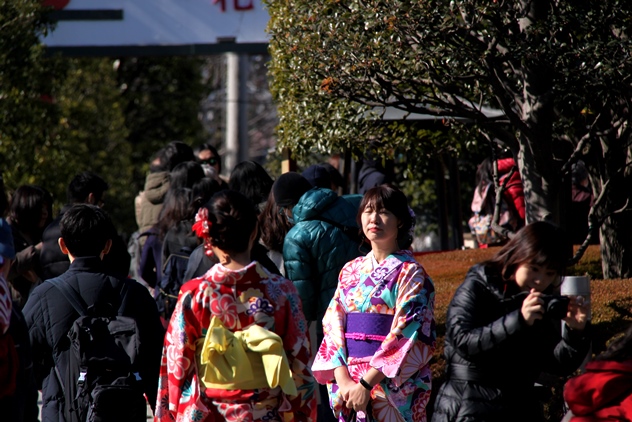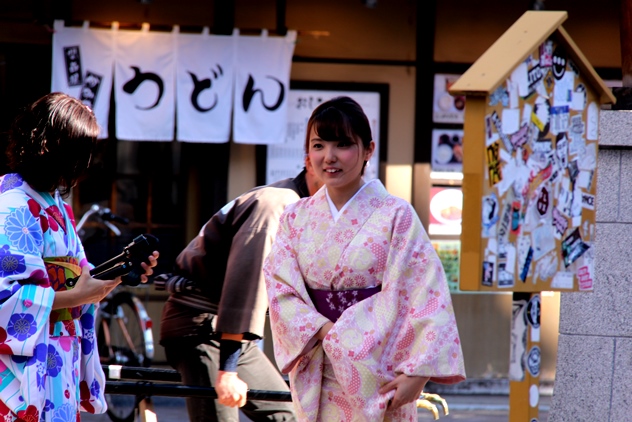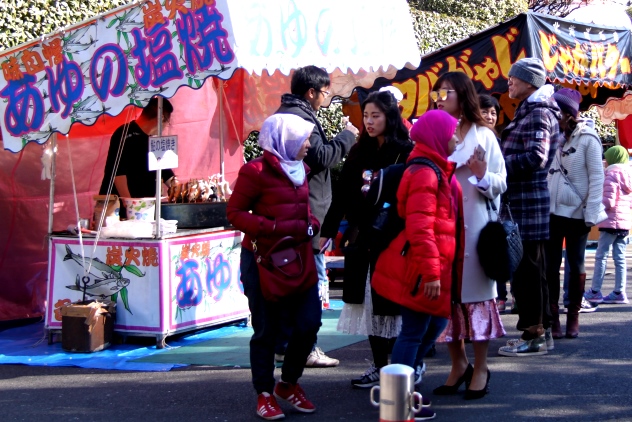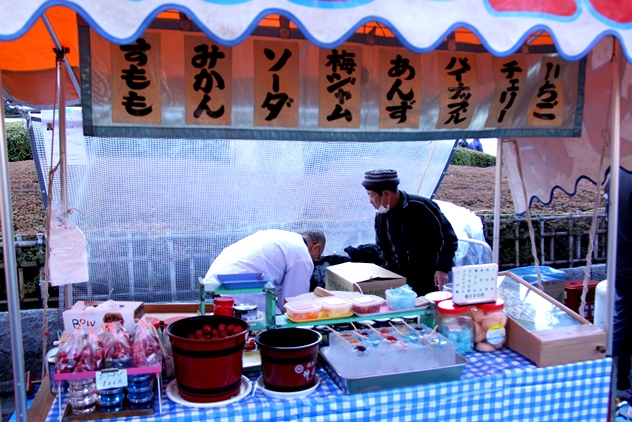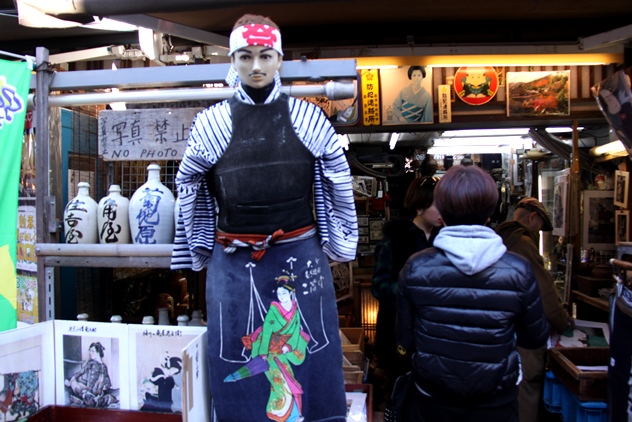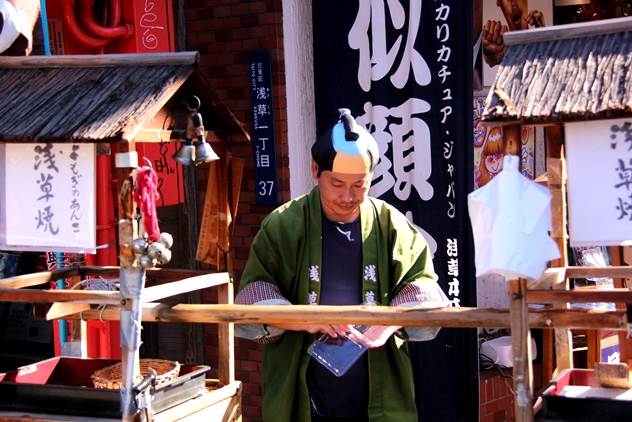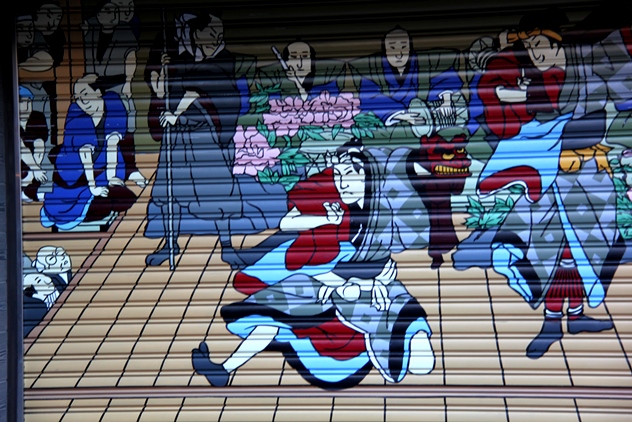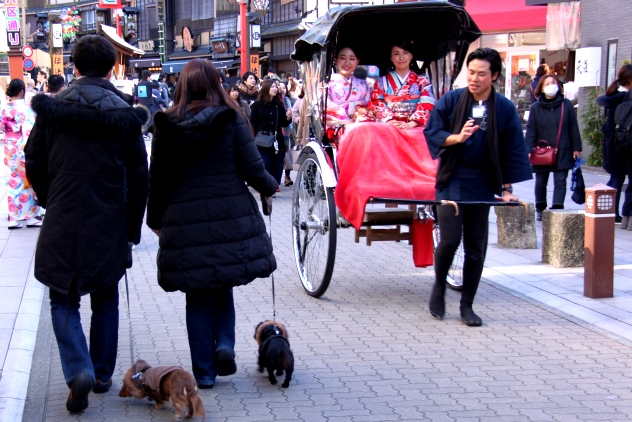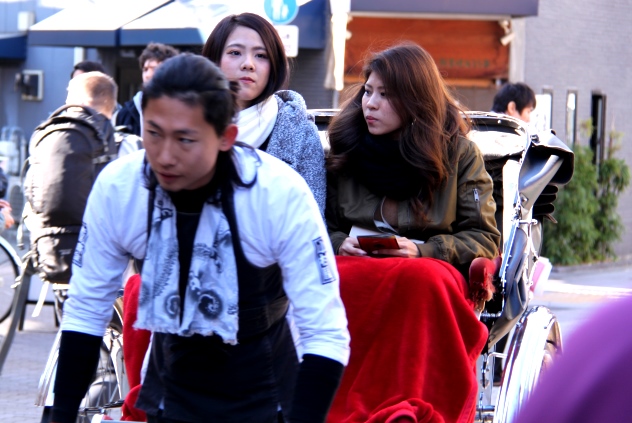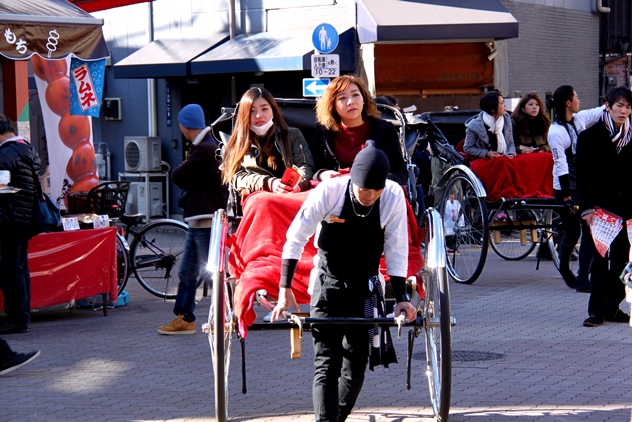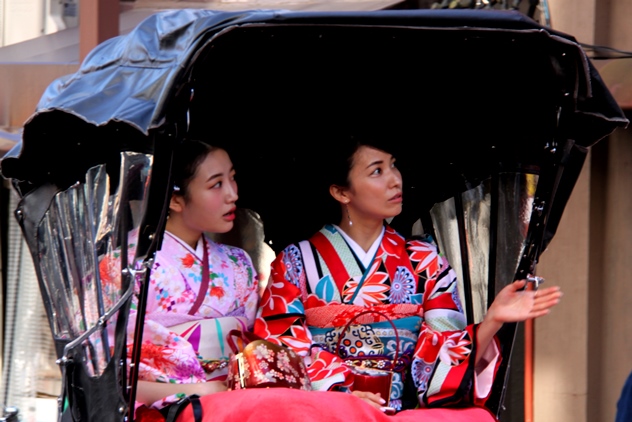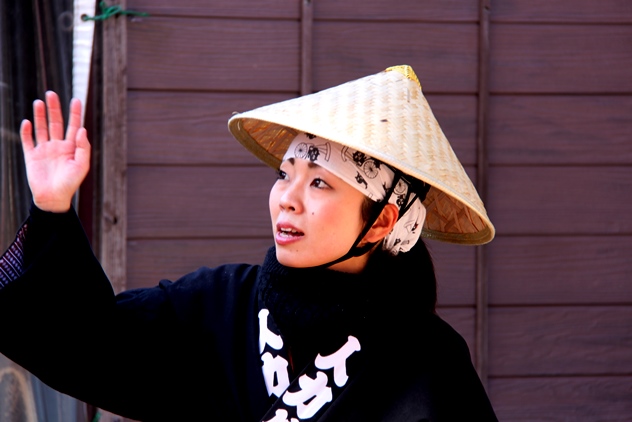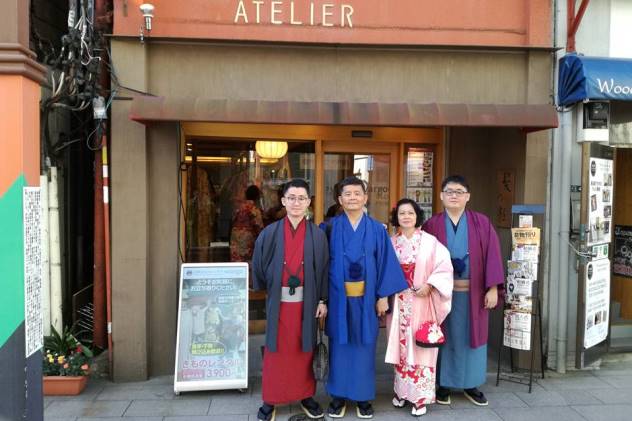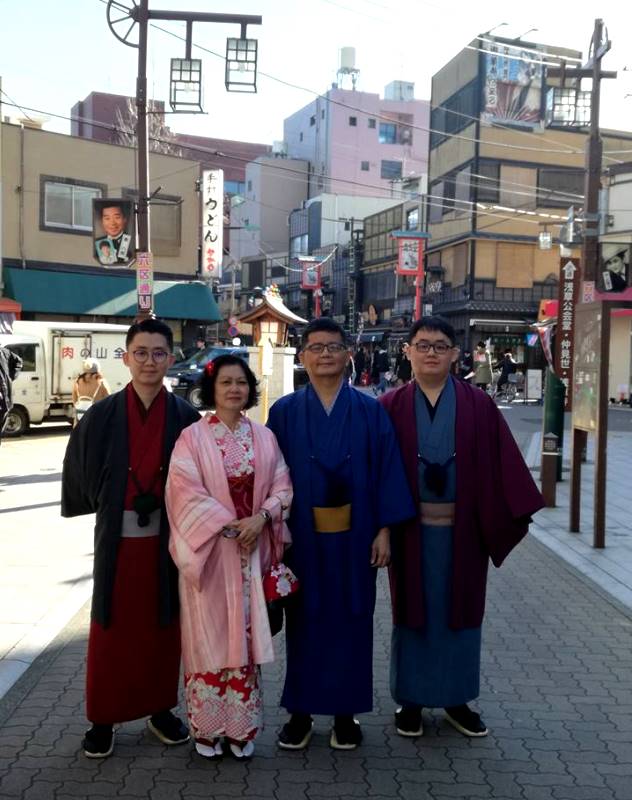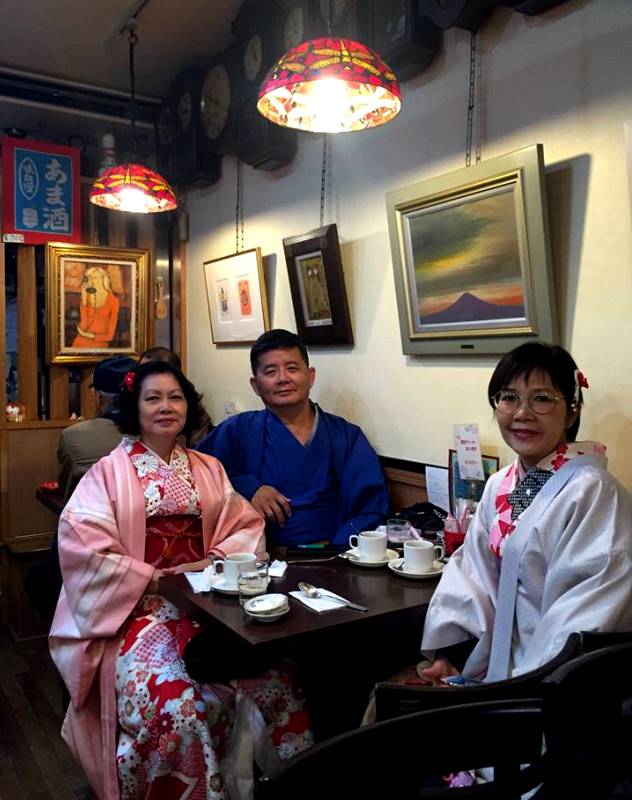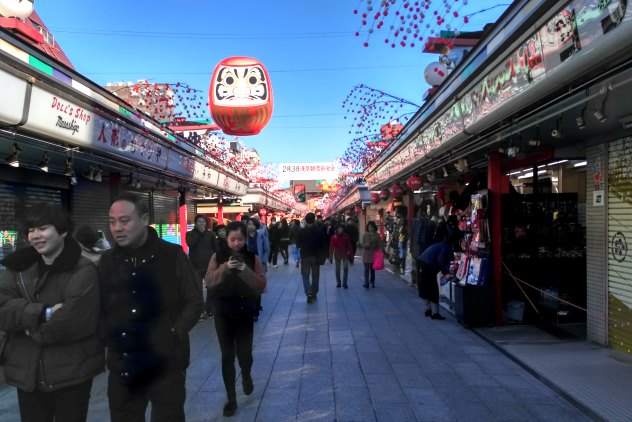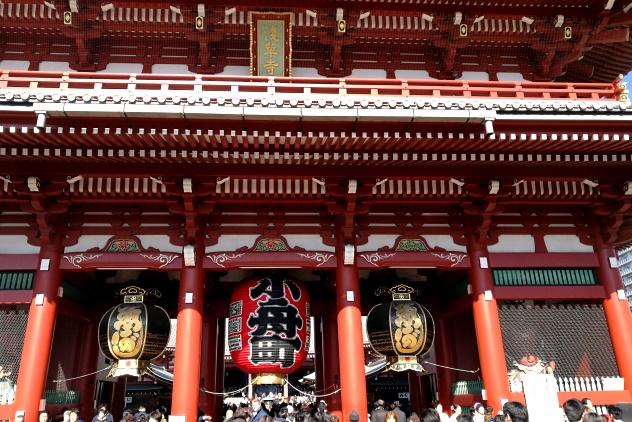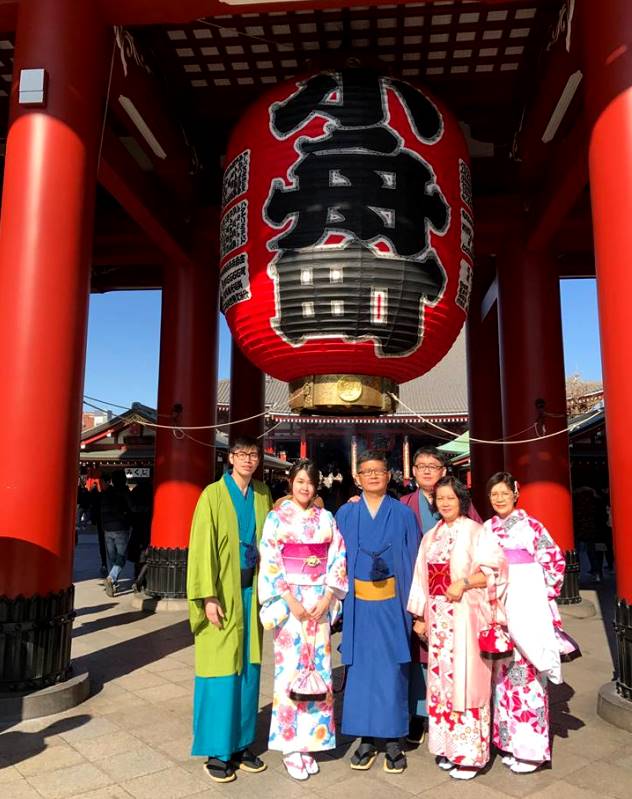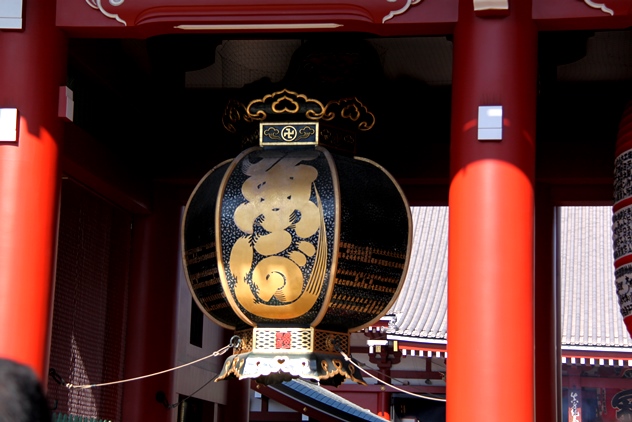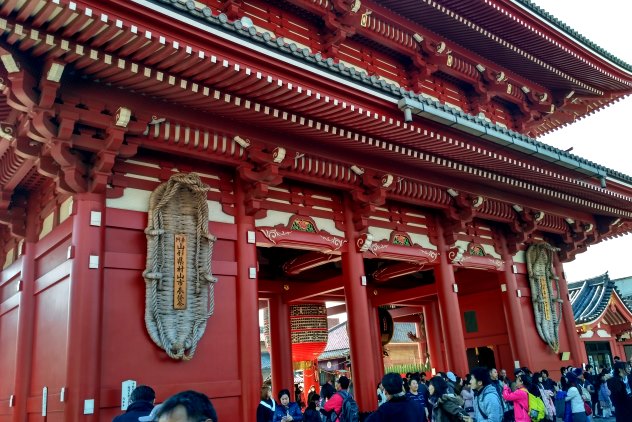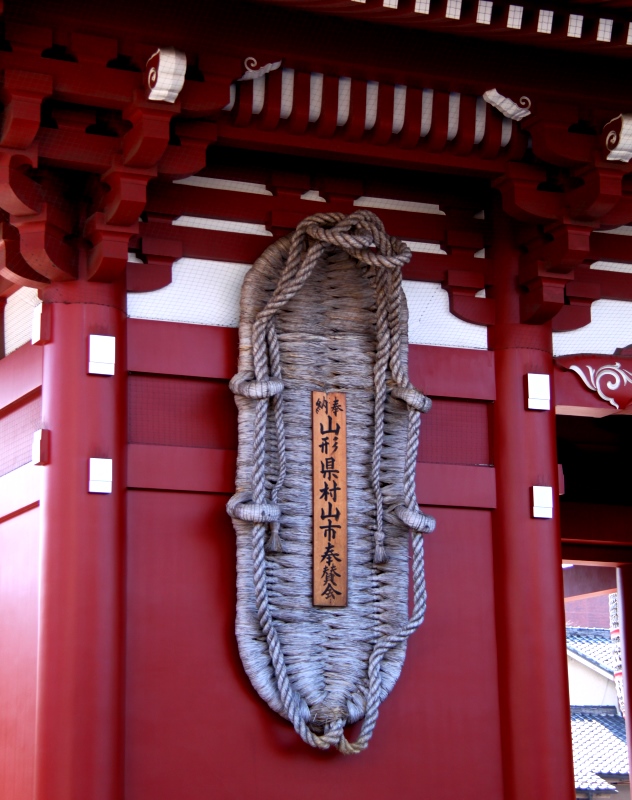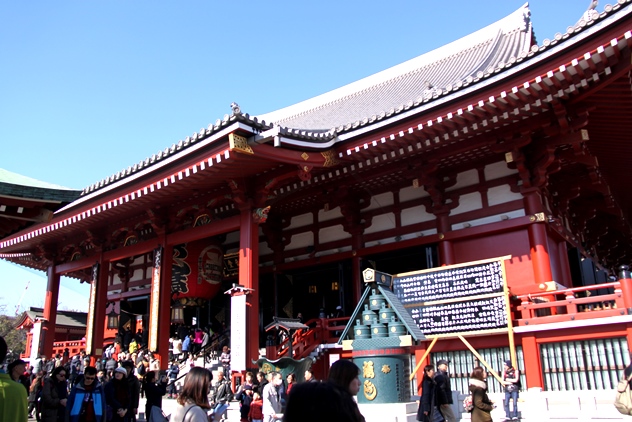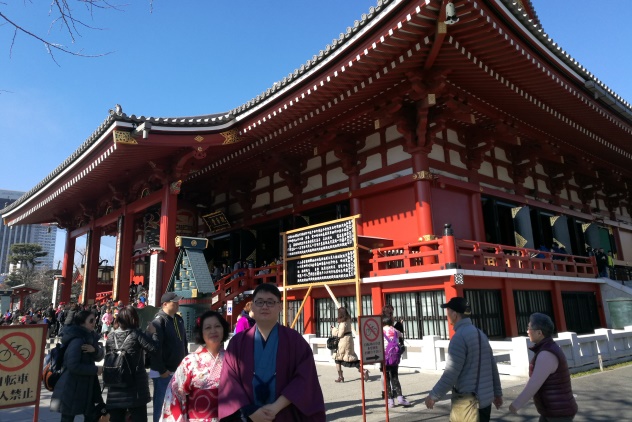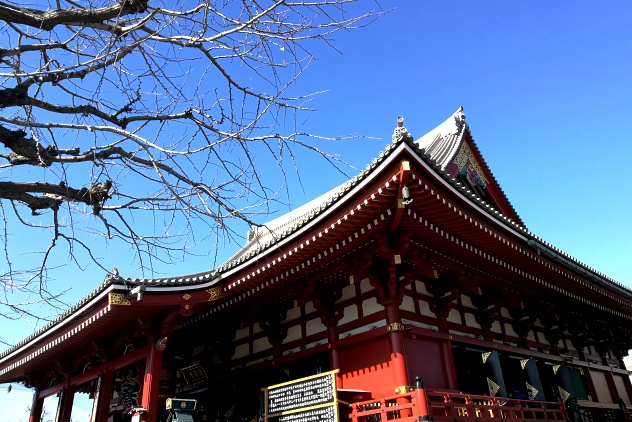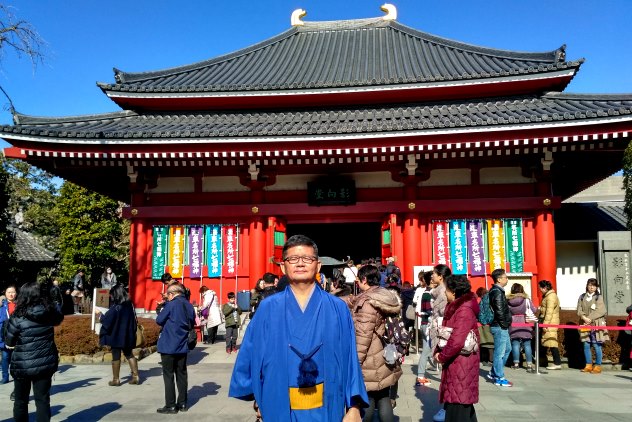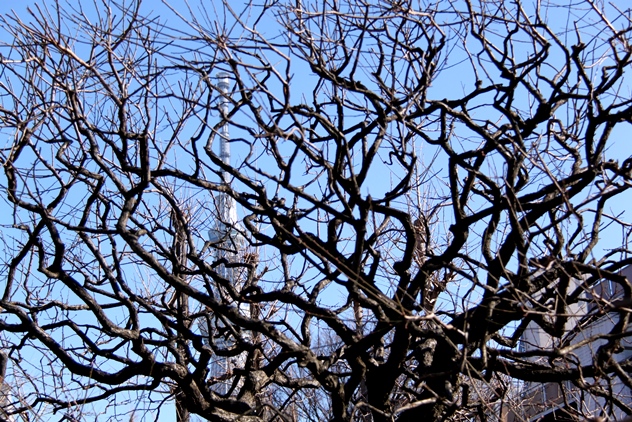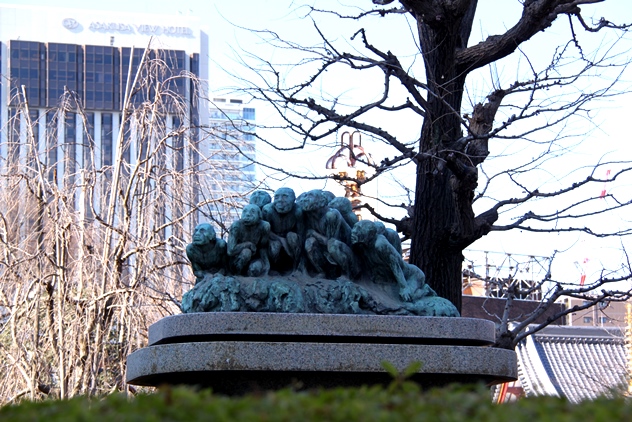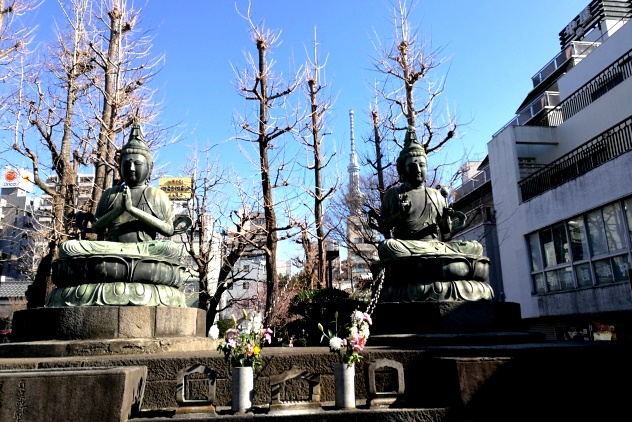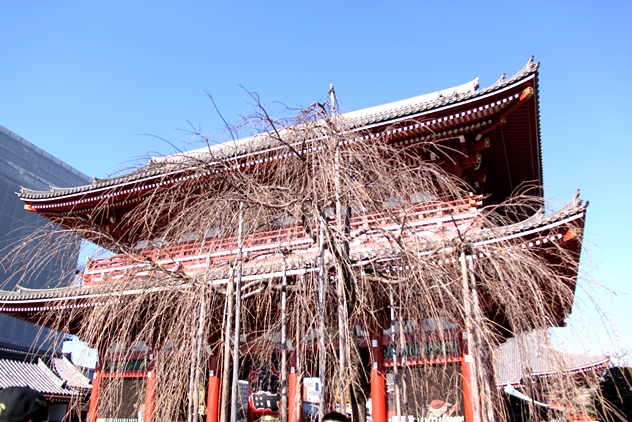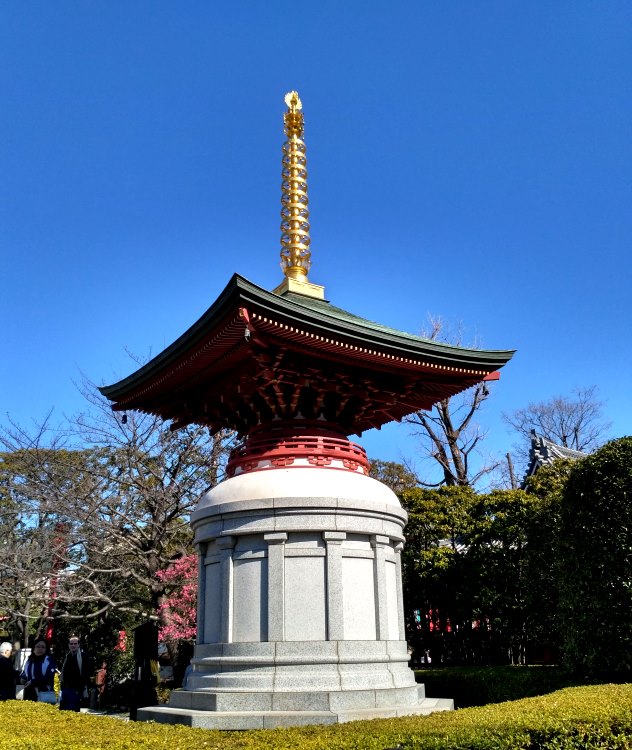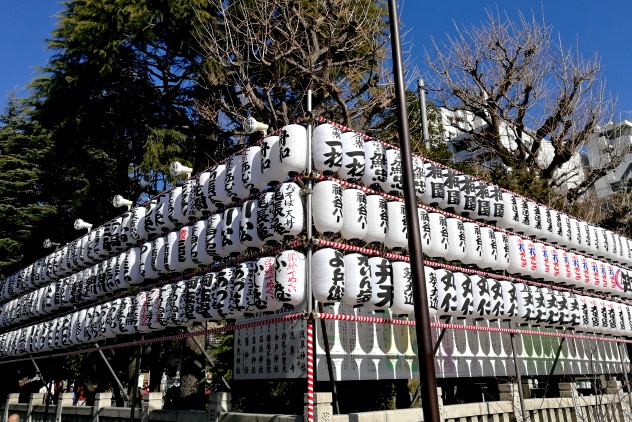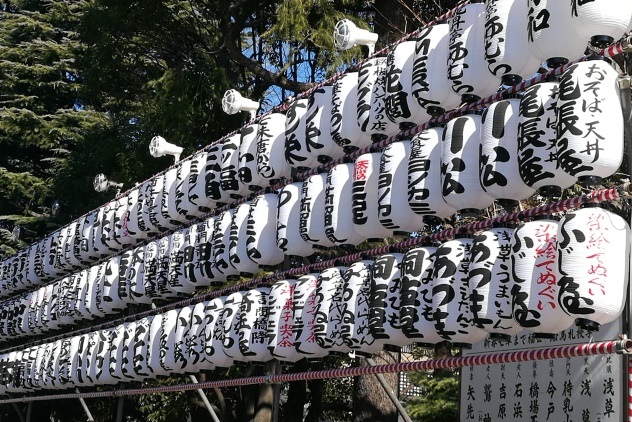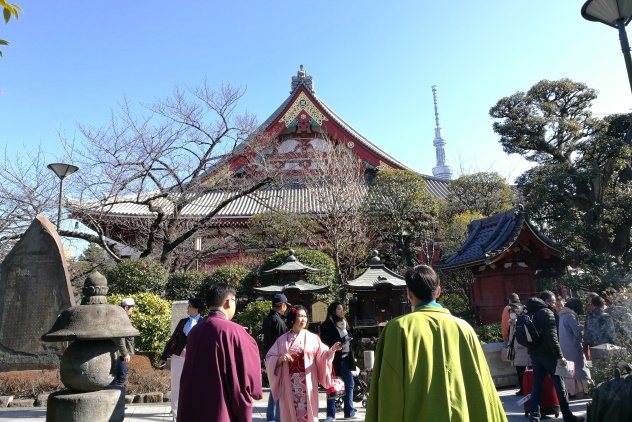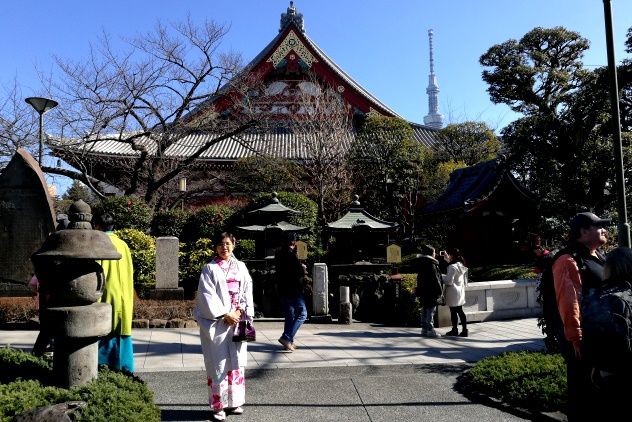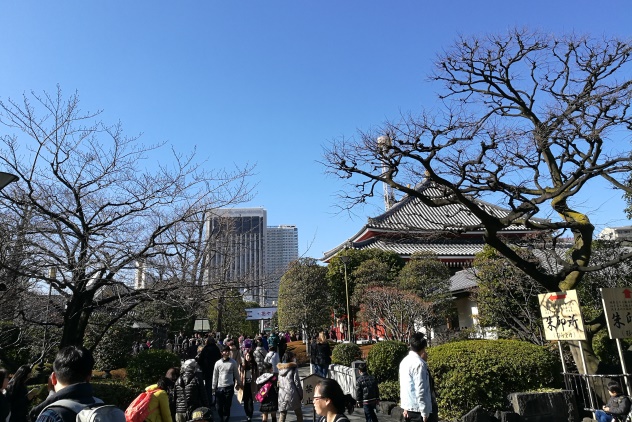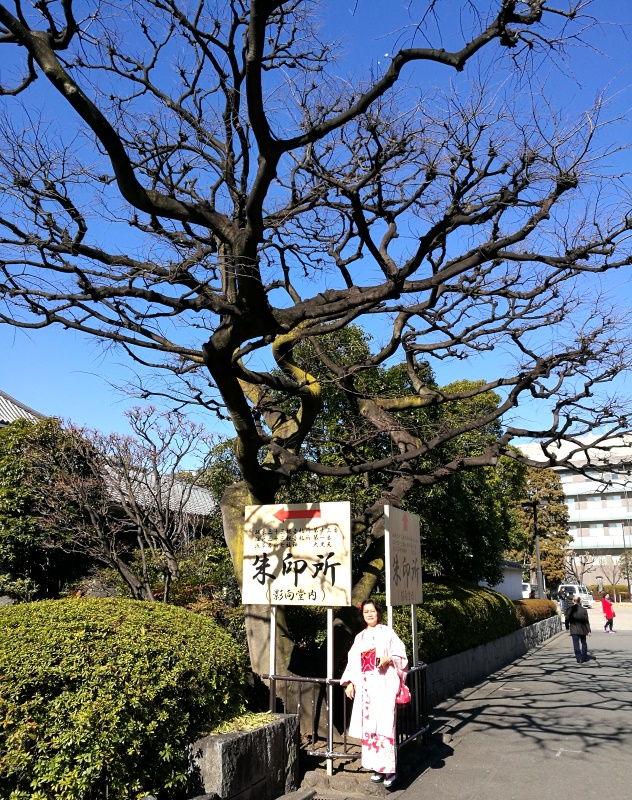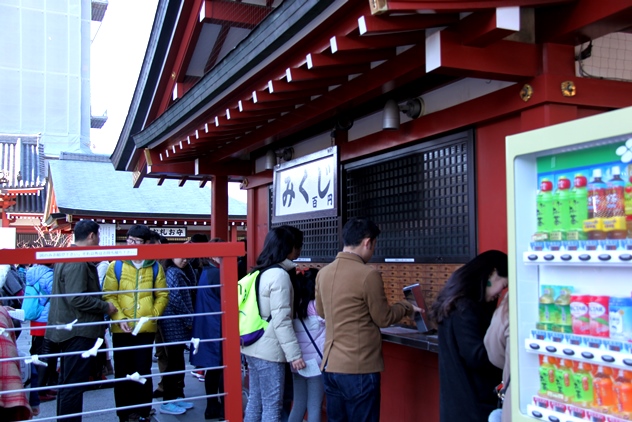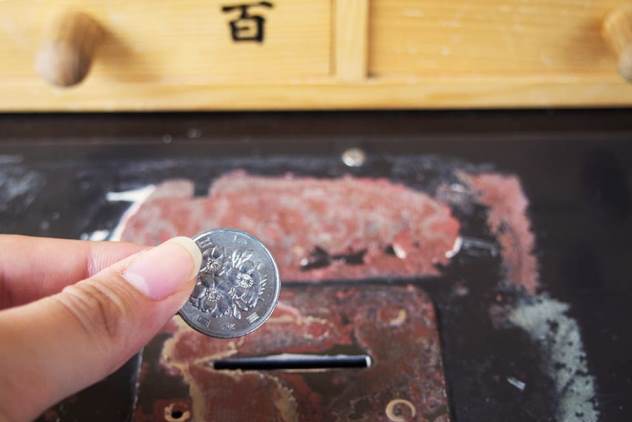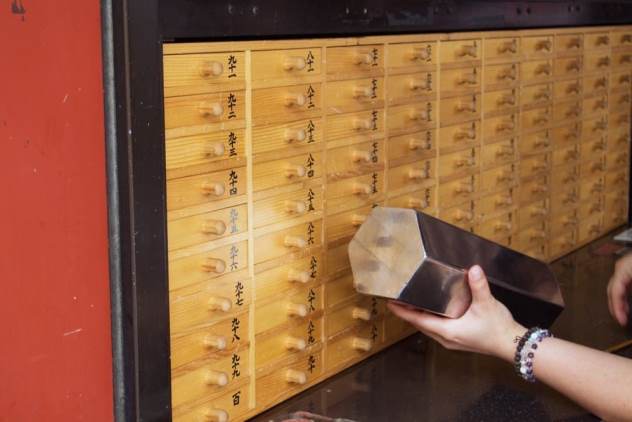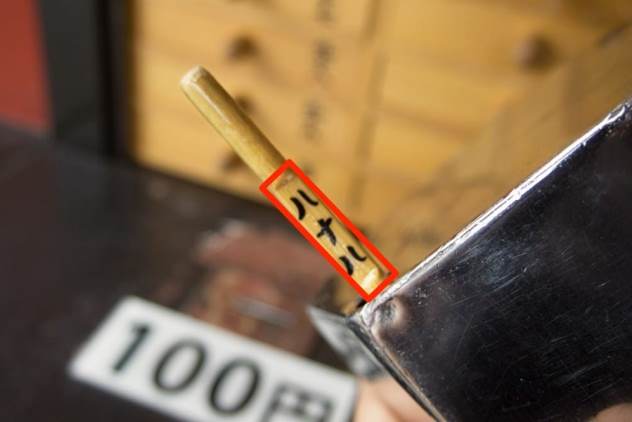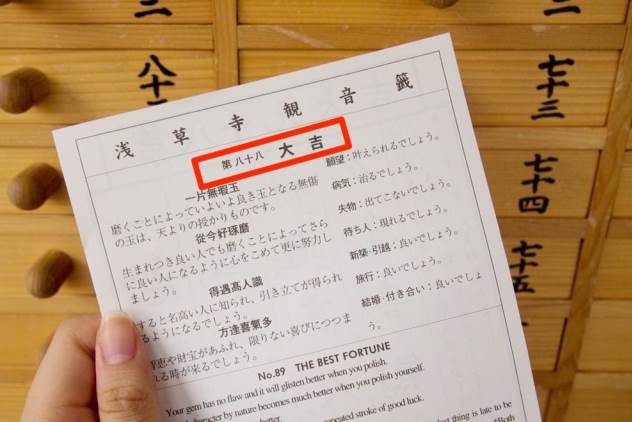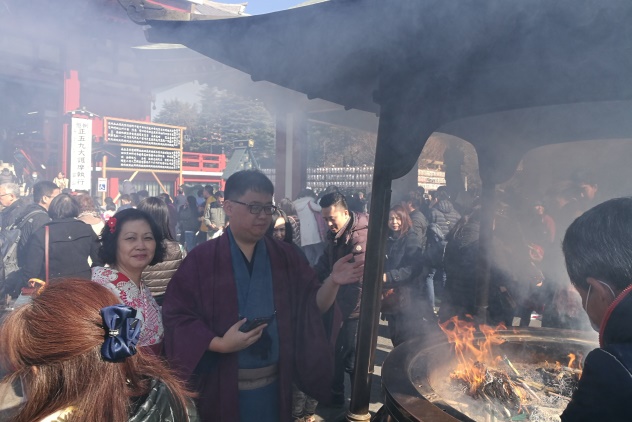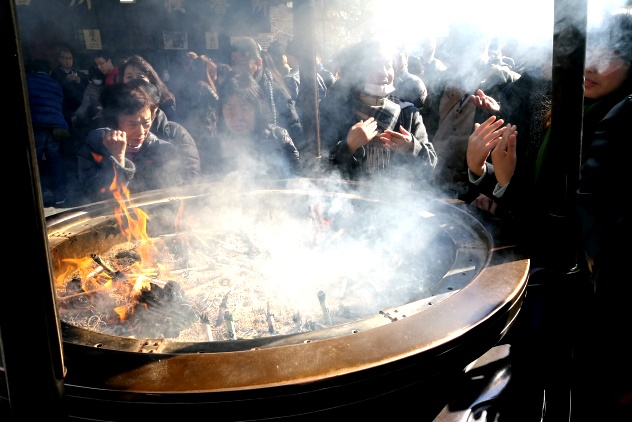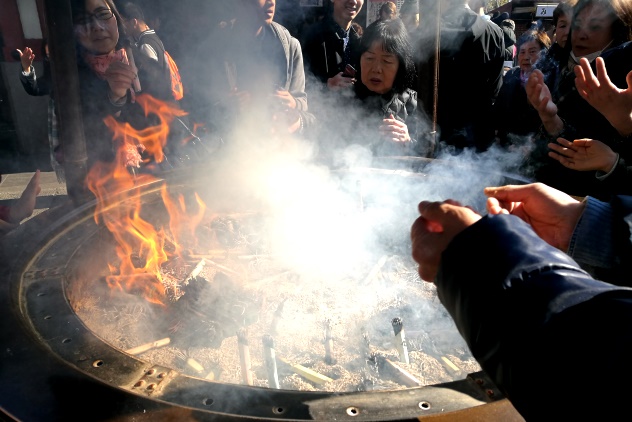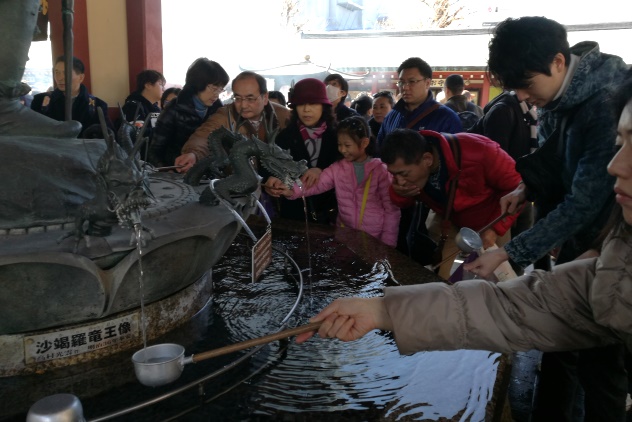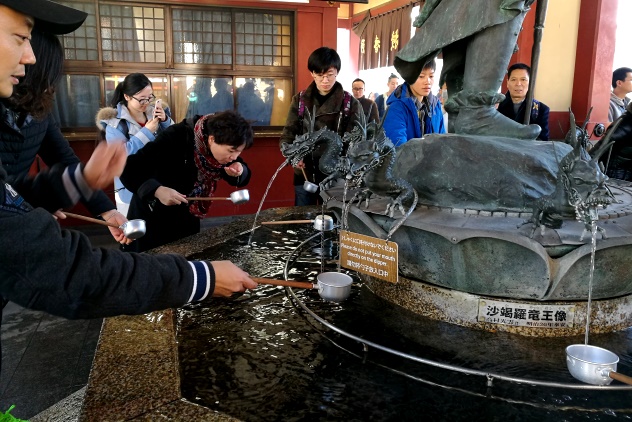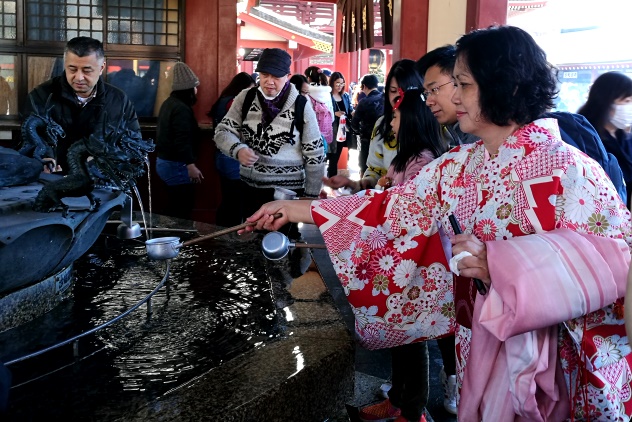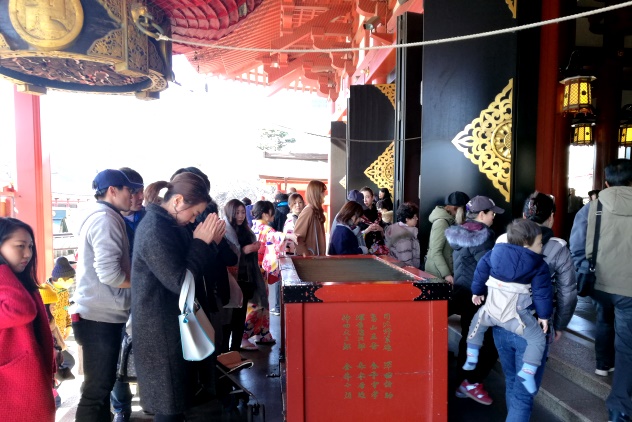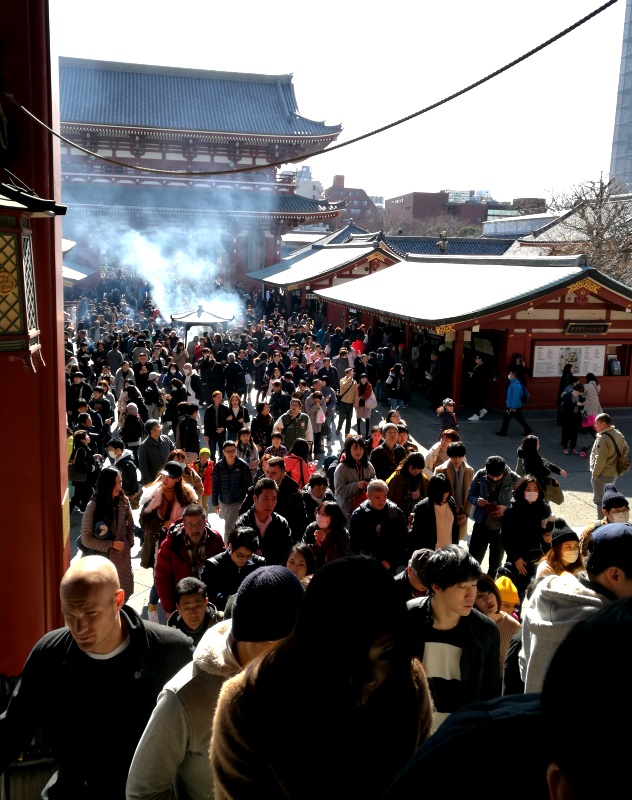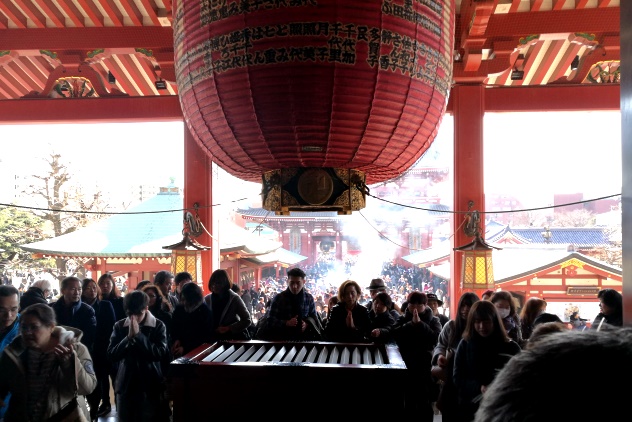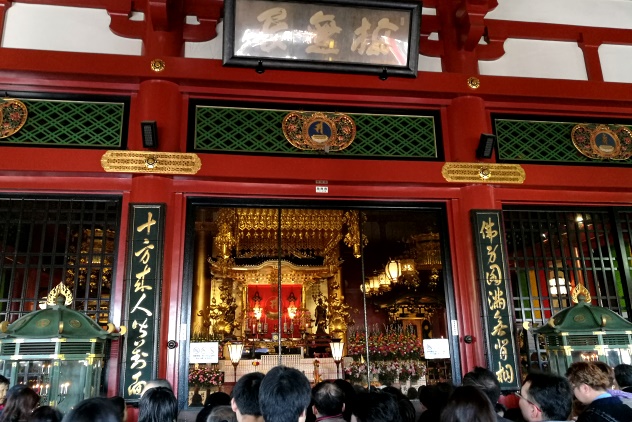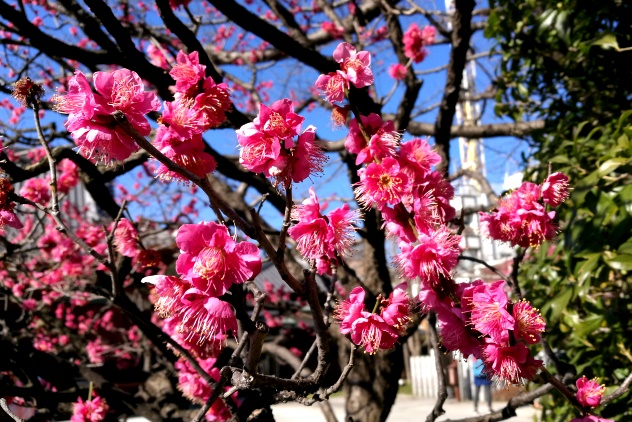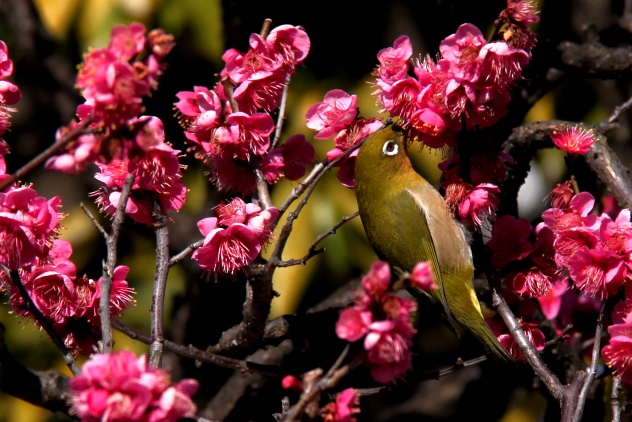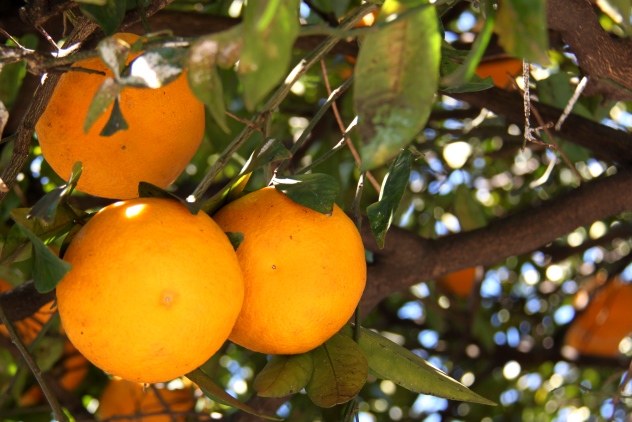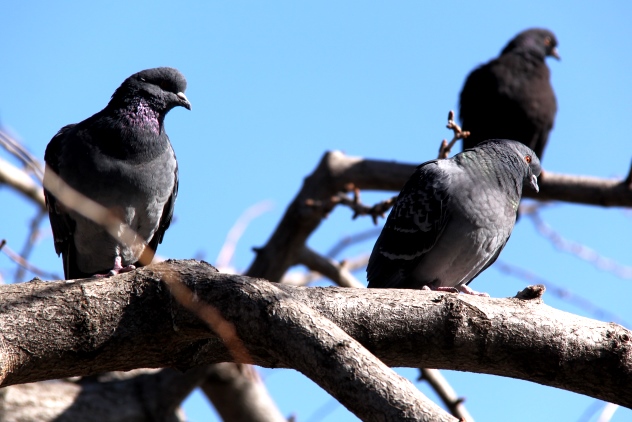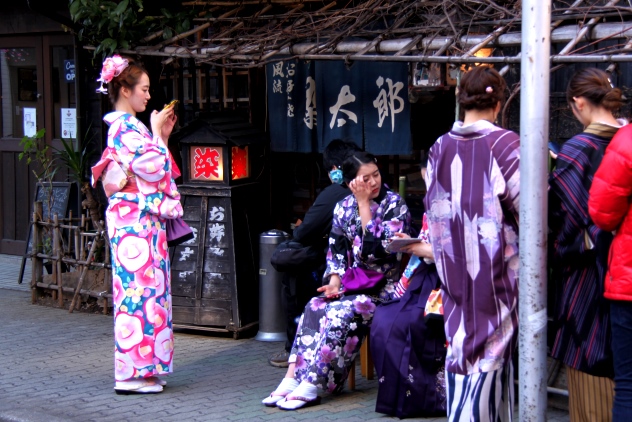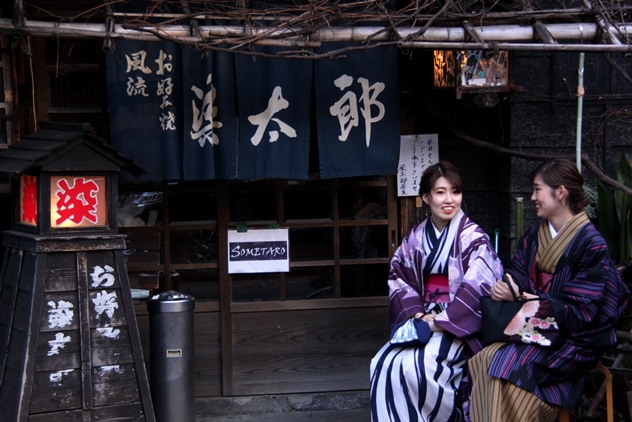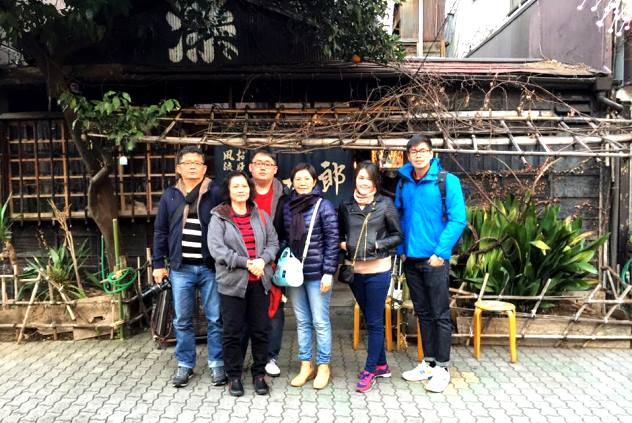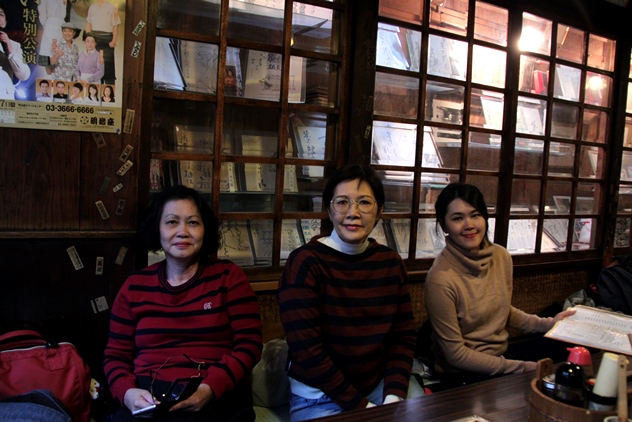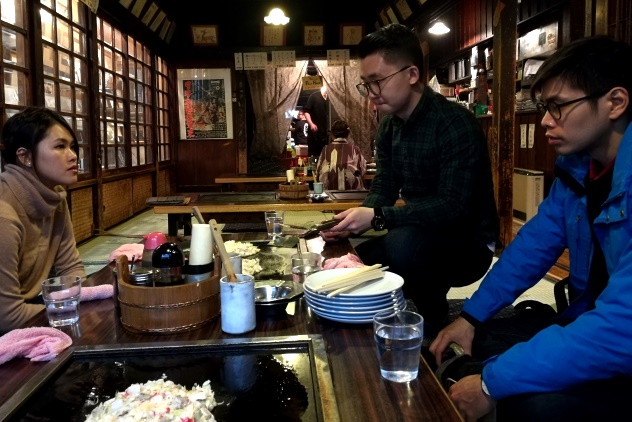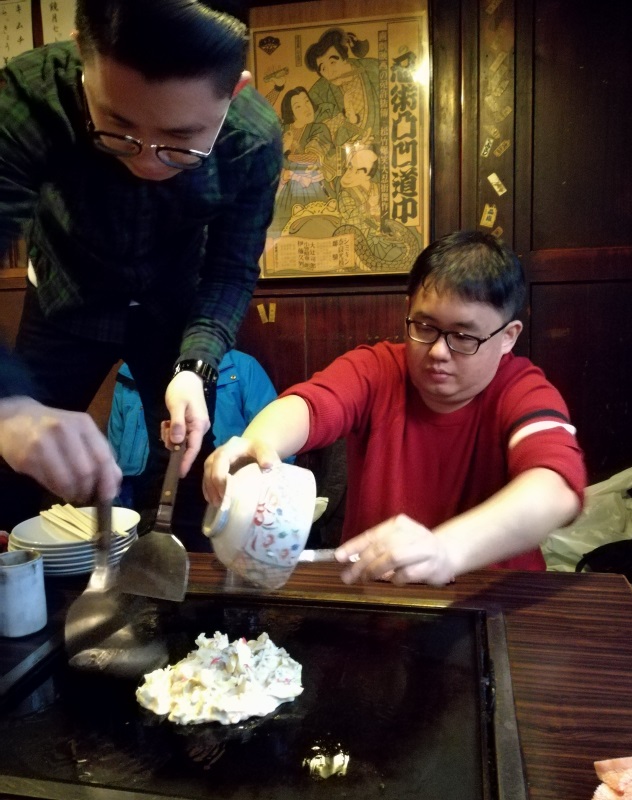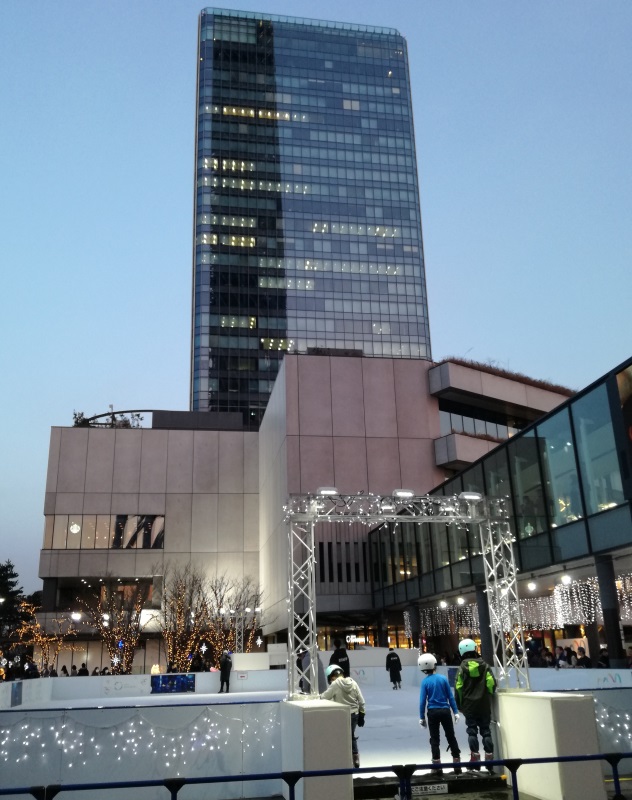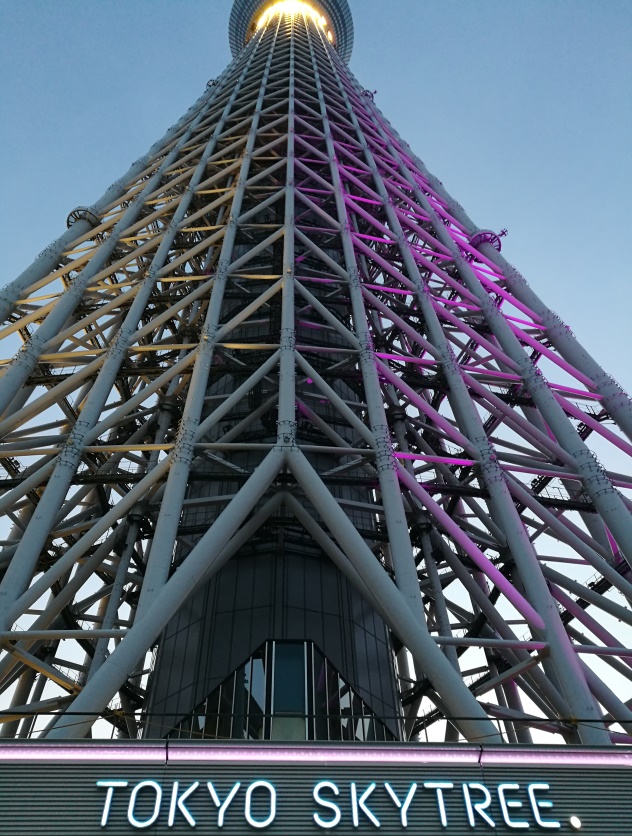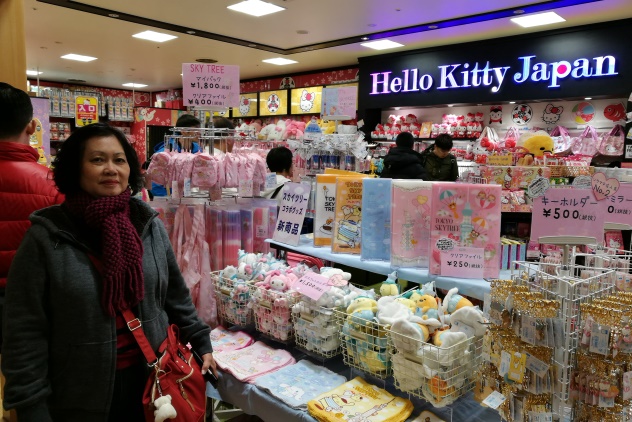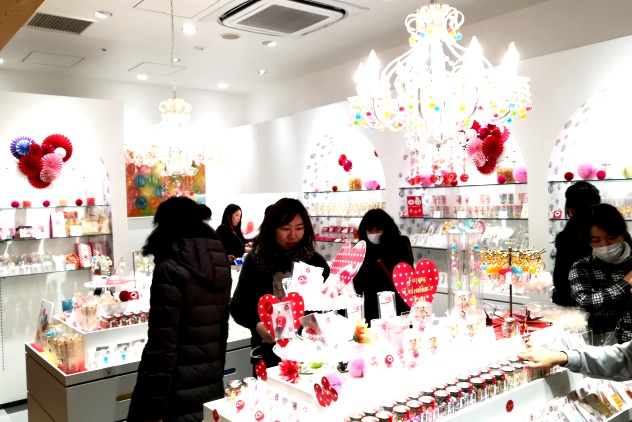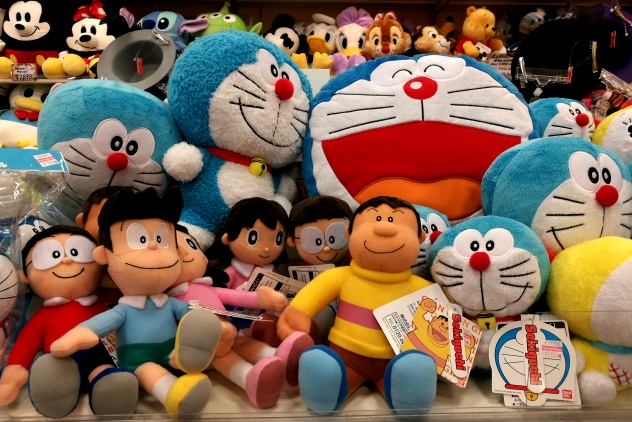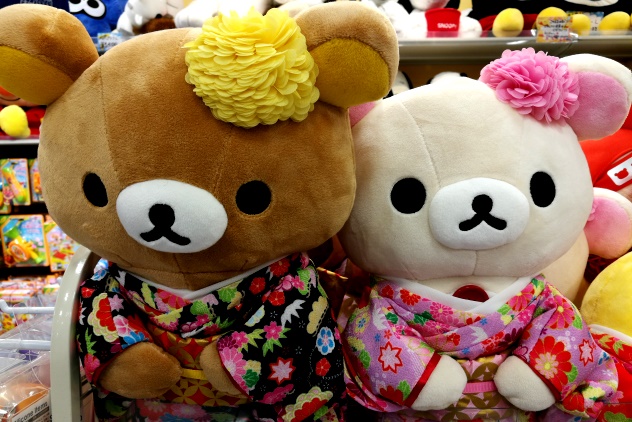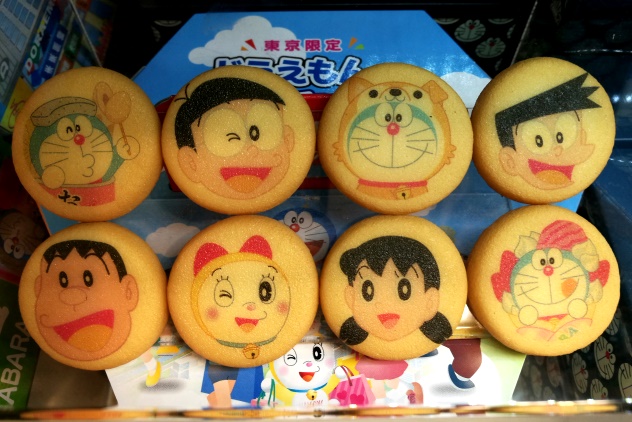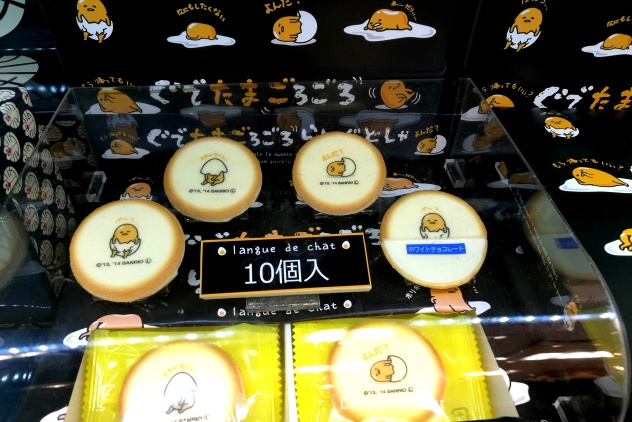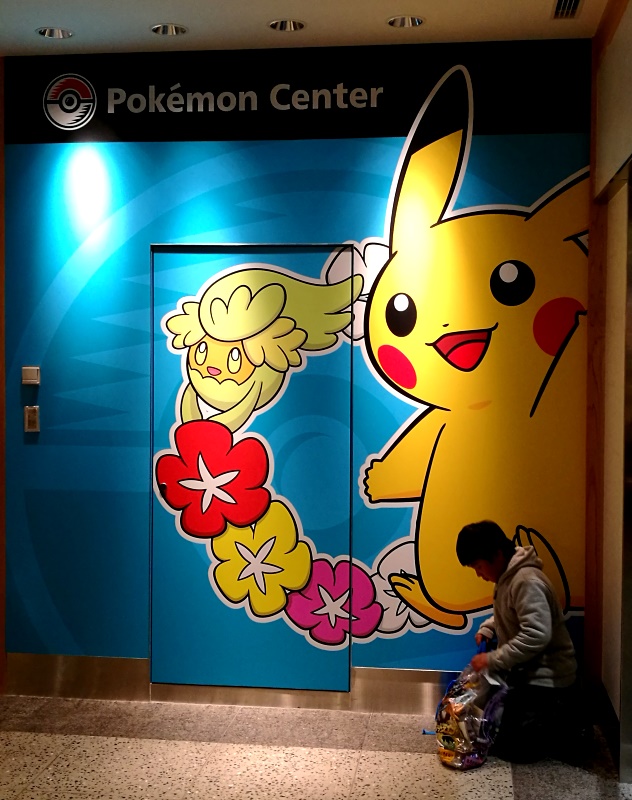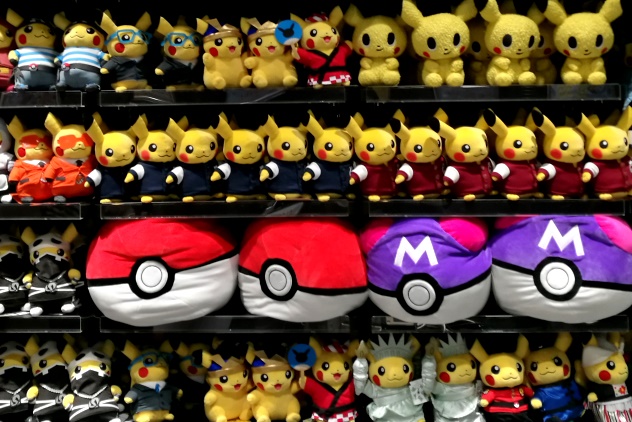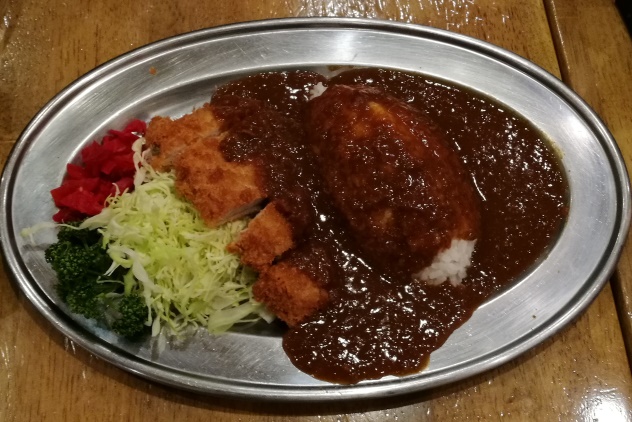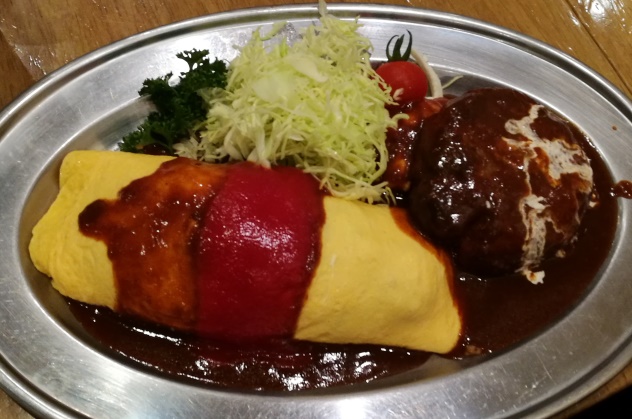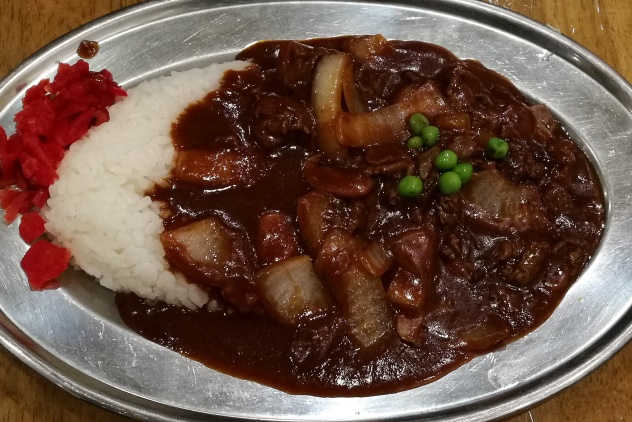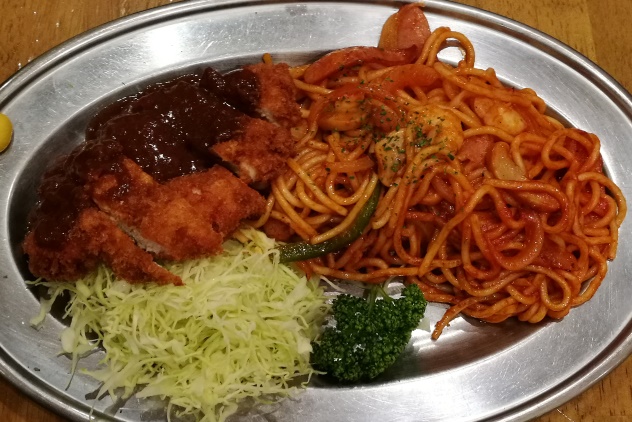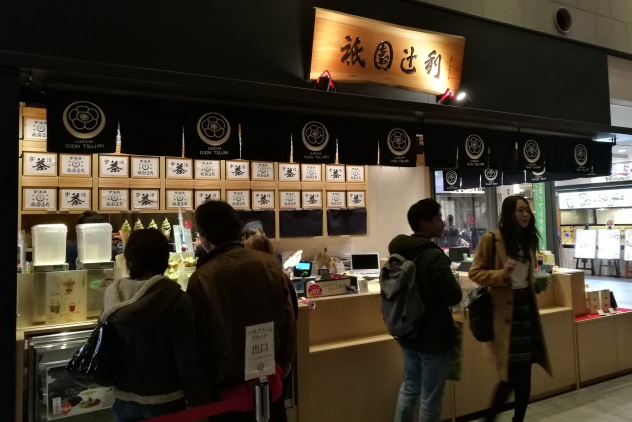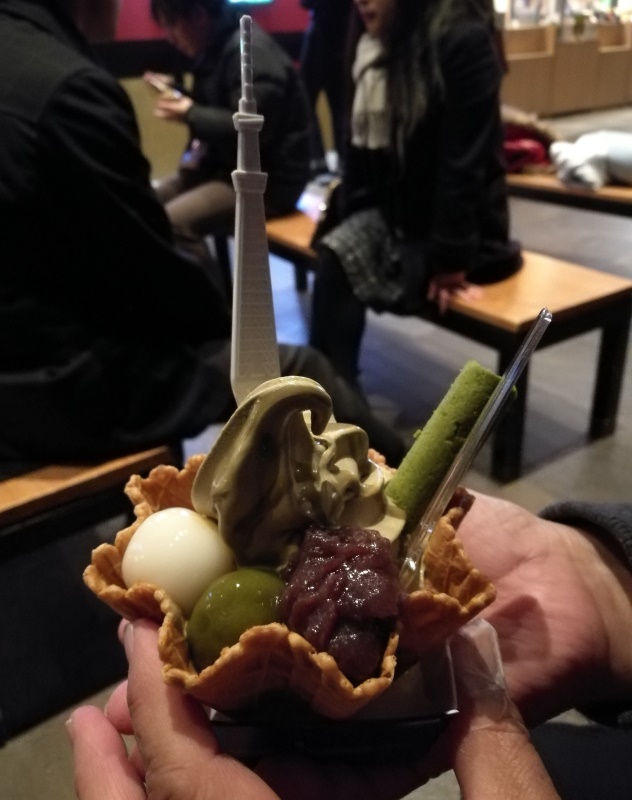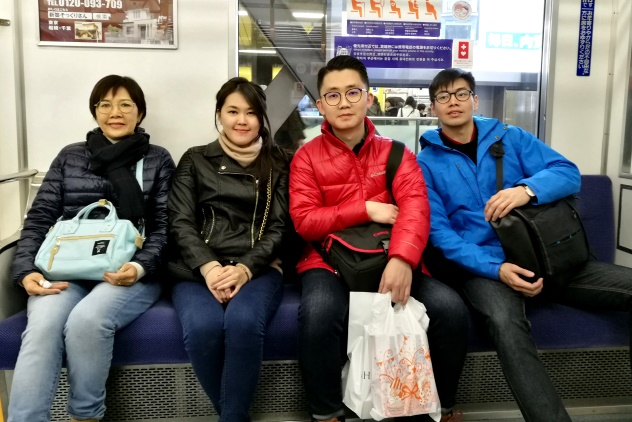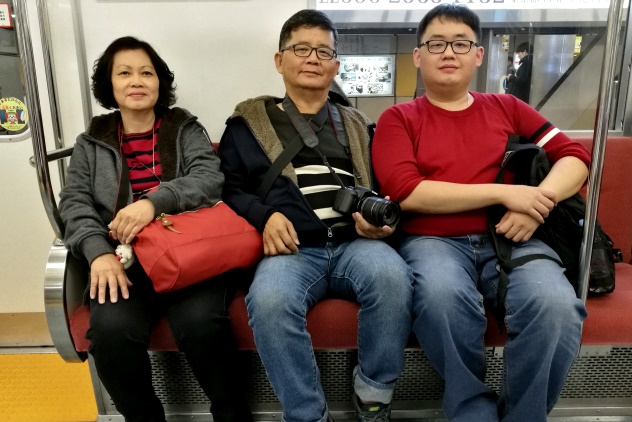On our third day in Japan, we travelled to Asakusa, arriving there at about 9.10 am.
Asakusa is one of the main sightseeing spots in Tokyo. It is where the traditional meets the modern Tokyo. There are many small little alleys with unique shops, and is particularly famous for Sensoji Temple. Asakusa offers an experience of the sights, sounds and smells of old, historical Tokyo like nowhere else in Tokyo.
Asakusa is one place in Tokyo where you can take a traditional rickshaw ride. Rickshaws are pulled by young Japanese men wearing traditional happi coat and hachimaki headband. We saw a lot of these rickshaws and their young handsome male pullers but we also saw a pretty lady rickshaw puller here, the only female rickshaw puller that we saw during our stay in Japan.
We made our way to Atelier as my son Clarence had made bookings online for us to be dressed up in kimonos. Our appointment was 9.30am and we did not want to be late as it would take a bit of time to choose our kimonos and getting dressed up in the kimonos by the staff of Atelier.
After choosing the kimonos, we were escorted to the dressing room where the female staff helped to dress us up in the kimonos. I found it a bit embarrassing to strip down to my underwear in front of the lady staff and let her dress me up.
After all of us were smartly dressed in kimonos, we ventured out onto the streets of Asakusa. Initially I felt a bit embarrassed as I saw quite a lot of people staring at us. But after a while, I got used to it as I saw quite a lot of people in kimonos walking around too.
Asakusa is a lovely town. We wandered around looking for a place to have breakfast and settled on a tiny café that has seats for probably about 15-18 persons. But it was a cosy little place and we enjoyed our coffee and breakfast there.
The Furai Jin-mon, also known as Kaminarimon Gate, dominates Asakusa’s main street and is the district’s best known landmark. This Gate of the Wind God and the Thunder God is adorned with a huge chochin red paper lantern that bears the inscription “Kaminari-mon (Thunder Gate).” The pillars of the gate are home to four statues, with those of Fūjin and Raijin (the gods of wind and thunder) at the front, and Tenryū and Kinryū (the heavenly dragon god and the golden dragon goddess) at the back. Japan’s history, much like that of recent times has been filled with typhoons, storms, earthquakes and tsunamis, all of which have wiped out communities across the islands, and as such Fūjin and Raijin are widely feared and respected for their command over nature.Of the countless chochin lanterns in Japan, this is certainly the most famous.
Kaminarimon Gate is the entrance to Nakamise, the front approach to Sensoji Temple. The approximately 250 metres long approach from Kaminarimon Gate to Hozomon Gate is called Nakamise Dori. Nakamise Dori is lined with around 90 Japanese street food stores and souvenirs shops selling Japanese-style products such as hair accessories, Japanese clogs, wooden dolls and chiyogami (colored paper), folk art products, postcards, ningyoyaki and kaminari-okoshi, which are the representative souvenir confectioneries from Tokyo, and classic Japanese snacks made from nori and kombu seaweeds.
Nakamise Dori is one of the oldest shopping streets in Japan. When Tokugawa Ieyasu, a warlord who governed Japan in the Sengoku Period (1493-1590), founded the Edo Shogunate, the population of the city of Edo increased rapidly. Some of the residents opened stores within the premises of Senso-ji Temple and on the approach, which is said to be the origin of Nakamise Dori.
The Hozomon (Treasure Keeping) gate is the inner gate that houses the treasures of the Sensoji Temple. It has two floors and the temple treasures are stored in the upper floor. It was first built in 942 by the then military commander, Taira no Kinmasa. He prayed at the Sensoji that he may become the Lord of Tokyo and built the gate in gratitude when he achieved his goal. The original gate was burned by a fire in 1631. The 3rd Tokugawa Shogun, Tokugawa Iemitsu rebuilt the Hozomon. This gate stood for 300 years till it was destroyed by the World War II bombings. The present Hozomon is a steel reinforced structure built with fire resistant materials for the safety of the temple treasures.
The Hozomon has two 5.5 meter tall statues of Nios or deities that guard Lord Buddha. It also has three large paper lanterns including one large and prominent red chochin donated by the residents of the town of Funamachi in 2003. They donated it to the temple to celebrate the 400th anniversary of the Edo period. On either side are two copper lanterns weighing 1000 kilograms each. The treasures preserved in the upper floor are a copy of the Lotus Sutra, a designated Japanese national treasure and the Issai Kyo, a complete collection of Buddhist scriptures that is designated as an important cultural property of Japan.
At the back of the gate are two giant straw sandals called the owaraji. These symbolize the power of the temple’s Nio protectors. The sandals are donated by the town of Maruyama in Yamagata Prefecture. They are handcrafted in a process that involves 800 people. Each sandal weighs around 250 kilograms (550 pounds). They were first donated in 1941 to protect the temple during WWII. The temple was completely destroyed in the war. The town donates a new pair every 10 years.
Upon passing through Hozomon, we made our way to the famous Sensoji Temple, also known as the Asakusa Kannon Temple. This is Tokyo’s most colourful Buddhist temple as well as the oldest temple in Tokyo. The history of Sensoji Temple goes a long way back into the past. Legend has it that fishermen discovered an image of Kan’non (the goddess of mercy) in the Sumida-gawa River around the year 628 and were inspired to enshrine it.
We roamed around the temple grounds and the temple itself, spending a couple of hours taking in the sights and marvelling at some of the rituals.
In the temple grounds, we saw omikuji stations. Omikuji is a strip of paper that predicts your fortune when you make a prayer to the gods and buddhas. So if you believe in fate and want to discover your fate, you can buy a omikuji. The results for omikuji range from the best “daikichi” (大吉 – excellent luck) to the worst “daikyou” (大凶 – terrible luck). Most people do not take a bad omikuji home. They tie the paper strip to a nearby rack with metal wires. The action of “tying the paper” (紙を結ぶ – kami wo musubu) is recommended by the temple in order to seal the fate. If you have a bad omikuji, don’t despair as the temple explains that even if you draw a bad fortune, the actions you take thereafter can alter your luck.
Each omikuji costs 100 yen but we did not try it. I searched online for photos of the omikuji drawing process to give you an idea of how it is done.
You start by placing a 100 yen coin through the hole into the money collection box to retrieve a hexagonal metal canister.
When you’ve inserted the money, shake the canister several times until a bamboo stick pops out from the canister.
You then look for the drawer labelled in the bamboo stick in the shelves and take one omikuji slip from the drawer.
It is interesting to watch the incense ritual in the temple. People crowd around incense burners and wave the smoke towards themselves to purify themselves.
At the entrance of the temple is a purification that features dragons. Again it is interesting to watch people lightly cleanse their hands and areas around their mouths with the water but you’re not supposed to drink it.
The temple itself was packed with people. I saw lots of tourists as well as local Japanese who had come to pray.
The gardens were beautiful and we saw some plum blossom trees already blooming though it was only the end of January. I was delighted to photograph a bird among plum blossom flowers. I saw some orange trees and some Japanese pigeons in the garden.
At about 2pm, we went back to Atelier to return the kimonos. It was time for lunch and we went to Sometaro Okonomiyaki to try their signature okonomiyaki. Okonomiyaki is a Japanese savoury pancake containing a variety of ingredients. The name is derived from the word okonomi, meaning “how you like” or “what you like”, and yaki meaning “grill”. There was a small queue and we waited in line for about 15 or 20 minutes before we were ushered in.
A waiter brought us the ingredients and dough for the pancakes. The waiter gave us guidance on how to cook the okonomiyaki on our table grill. It was a great food and cultural experience. The pancakes were delicious.
After lunch, we walked to the Asakusa Station where we took a train to Oshiage Station. From that station, we walked to Skytree Town. Tokyo Skytree Town is a modern commercial centre in the Sumida District of Tokyo that was opened in May 2012. Its got its name from the Tokyo Skytree Tower, the most famous landmark here.
We had intended to go up to the Tembo Deck and the Tembo Galleria on the Tokyo Skytree to get a bird’s- eye view of Tokyo. The queue was very long and would probably take a couple of hours if we were to wait for our turns. We shelved our plans of going up the tower and spent our time in Tokyo Solamachi, a shopping and entertainment complex with over 300 shops and restaurants around the base of Tokyo Skytree.
Tokyo Solamachi also features several plazas and green spaces from where you can admire the tower, as well as a planetarium and the Sumida Aquarium. To the east of the tower is the Skytree East Building office complex with restaurants on its top floors.
We love the way the stores here are set up and displayed. There are so many cute things to see, especially toys and snacks. We truly experienced cuteness overload while strolling around the complex. The Hello Kitty and the Pokemon Center attract a lot of shoppers.
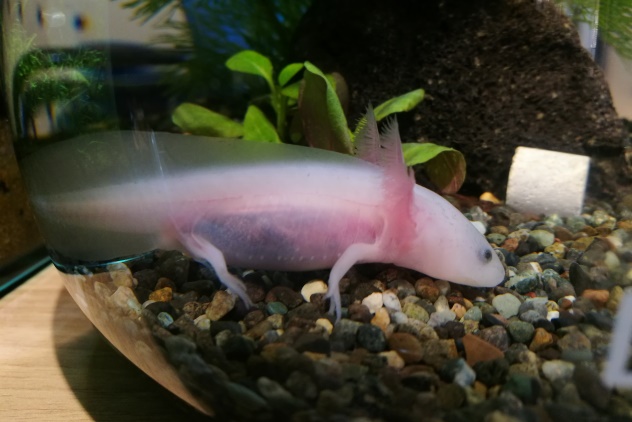
A strange fish sold in a aquarium shop…my son Clarence told me that this fish is endangered and not allowed to be sold in Singapore
The Pokémon Center offers a broad variety of exclusive merchandise, from game software to card games, themed around Pokémon characters popular the world over.
We had our dinner at one of the restaurants and after dinner we had green tea ice cream for desserts. The ice cream was lovely!
After dinner, it was time to call it a day. We took the metro back to our hotel. It had been a wonderful day indeed!
 CY@CY Says Welcome to my dreamscape. Where a Lim is also a Ling.
CY@CY Says Welcome to my dreamscape. Where a Lim is also a Ling.
